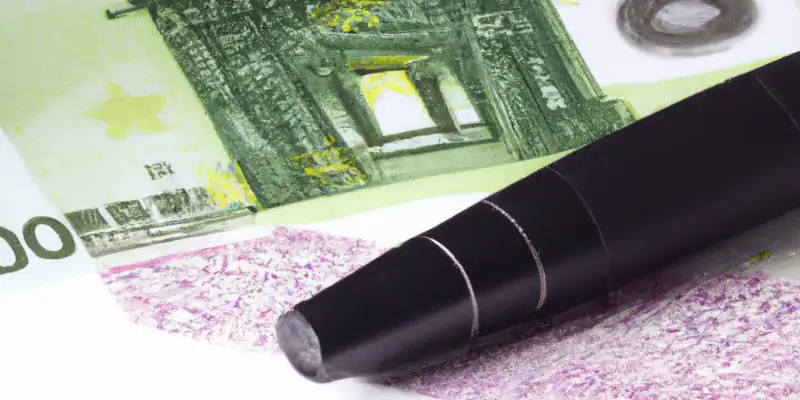Fake banknote detector pens work by testing the paper used in banknotes. The ink in the pen contains iodine or a similar substance that reacts with the starch in the wood-based paper commonly used in counterfeit banknotes. The iodine causes a chemical reaction with the starch, resulting in a dark blue or black colour.
When you use a fake banknote detector pen, you mark the banknote with ink. The ink will appear light yellow or clear if the banknote is genuine, and if the banknote is counterfeit, the ink will appear dark blue or black.
Counterfeiters often use regular paper instead of special paper in real banknotes containing fibres or other security features. These regular papers contain starch, which reacts with the iodine in the pen’s ink to produce a dark colour.
It’s important to note that while these pens are useful, they’re not foolproof. Skilled counterfeiters may use high-quality paper that doesn’t contain starch or chemicals to remove the starch from regular paper. Some counterfeit banknotes may be made from genuine banknote paper stolen or obtained illegally. Therefore, using various methods to detect counterfeit banknotes, including examining the banknote’s design and security features and using other counterfeit detection devices, is important.
The problem with polymer notes is they are not made from paper, so the process does not work. There is no result with no starch in the plastic polymer for the pen ink to react. This makes the counterfeit banknote detector pens redundant for UK polymer notes.

